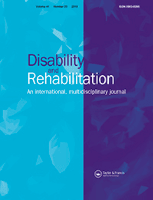
DISABILITY AND REHABILITATION
Scope & Guideline
Pioneering Research for Effective Rehabilitation Practices.
Introduction
Aims and Scopes
- Rehabilitation Science:
The journal emphasizes evidence-based rehabilitation science, exploring various therapeutic interventions aimed at improving functional outcomes for individuals with disabilities. - Multidisciplinary Approaches:
Research published in the journal often involves collaboration across multiple disciplines, including physiotherapy, occupational therapy, psychology, and social work, to address complex rehabilitation needs. - Patient-Centered Care:
A significant focus is placed on patient perspectives and experiences, emphasizing the importance of tailoring rehabilitation strategies to meet individual needs and preferences. - Innovative Technologies:
The journal covers advancements in rehabilitation technologies, including telehealth, virtual reality, and other digital interventions, showcasing their effectiveness in enhancing rehabilitation outcomes. - Community Reintegration:
Research addressing the social aspects of rehabilitation, including participation in community life and the impact of environmental factors on disability, is a core area of focus. - Health Equity and Access:
The journal highlights issues related to health disparities and access to rehabilitation services, particularly for underserved populations, advocating for inclusive practices.
Trending and Emerging
- Telehealth and Digital Interventions:
There has been a significant increase in research exploring the effectiveness of telehealth and digital interventions, especially in the context of the COVID-19 pandemic, highlighting their role in enhancing access to rehabilitation services. - Mental Health Integration:
Emerging studies increasingly emphasize the integration of mental health support within rehabilitation frameworks, acknowledging the interplay between psychological well-being and physical recovery. - Community-Based Rehabilitation:
Research focusing on community-based rehabilitation strategies is gaining traction, reflecting a shift towards enhancing social participation and community integration for individuals with disabilities. - Personalized Rehabilitation Approaches:
There is a growing emphasis on personalized rehabilitation strategies that tailor interventions to individual needs, preferences, and circumstances, moving away from standardized programs. - Resilience and Coping Mechanisms:
Emerging themes include the exploration of resilience and coping strategies among individuals with disabilities, recognizing their impact on recovery and quality of life. - Inclusive Practices and Disability Justice:
Research addressing disability justice and the importance of inclusive practices in rehabilitation settings is on the rise, reflecting broader societal movements towards equity and accessibility.
Declining or Waning
- Traditional Rehabilitation Models:
There is a noticeable decline in research centered on traditional, one-size-fits-all rehabilitation models as the field increasingly embraces personalized and patient-centered approaches. - Pharmacological Interventions:
Studies focusing primarily on pharmacological treatments for disability-related issues are becoming less common, as there is a growing preference for non-pharmacological interventions and holistic approaches. - Static Outcome Measures:
Research utilizing static or singular outcome measures for assessing rehabilitation effectiveness is waning, with a shift towards more dynamic and multifaceted assessments that consider broader aspects of patient well-being. - Focus on Physical Disabilities Only:
There appears to be a decreasing emphasis on solely physical disabilities, as the journal expands its scope to include mental health and psychosocial factors influencing rehabilitation outcomes. - General Population Studies:
Research targeting broad population samples without a specific focus on disability or rehabilitation nuances is less prominent, indicating a trend towards more targeted and condition-specific studies.
Similar Journals
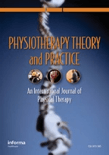
PHYSIOTHERAPY THEORY AND PRACTICE
Advancing the Science of RehabilitationPHYSIOTHERAPY THEORY AND PRACTICE is a leading journal within the realm of physical therapy, sports therapy, and rehabilitation, published by Taylor & Francis Inc. With an ISSN of 0959-3985 and an E-ISSN of 1532-5040, this esteemed journal focuses on the interdisciplinary approaches and clinical practices that advance the science and application of physiotherapy. Ranking in the top 33% of its category as indicated by its Q2 status in the 2023 category quartiles, it serves as an essential conduit for innovative research and evidence-based practices. The journal has been a vital resource since its inception in 1985, continuing to attract contributions that explore the latest developments in rehabilitation and therapy strategies. Although currently not an Open Access journal, PHYSIOTHERAPY THEORY AND PRACTICE remains pivotal in shaping the landscape of health professions, providing insightful articles that empower researchers, practitioners, and students to enhance patient care and treatment strategies in an evolving field.
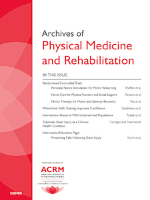
ARCHIVES OF PHYSICAL MEDICINE AND REHABILITATION
Innovative Studies Driving Change in Physical TherapyArchives of Physical Medicine and Rehabilitation, published by W B Saunders Co-Elsevier Inc., is a premier academic journal dedicated to the fields of physical therapy, sports therapy, and rehabilitation. Since its inception in 1945, it has evolved to provide a platform for groundbreaking research and insightful discourse that shapes clinical practice and enhances patient outcomes. With a notable impact factor and ranking in the top quartiles of its respective categories, this journal consistently showcases the most innovative studies, systematic reviews, and evidence-based practices that drive forward the understanding of rehabilitation medicine. As a vital resource for researchers, healthcare professionals, and students alike, it contributes significantly to the advancement of knowledge in rehabilitation sciences. With an aim to bridge the gap between research and practice, the journal invites contributions from all disciplines related to physical medicine and rehabilitation, fostering a collaborative environment that promotes the dissemination of impactful findings.
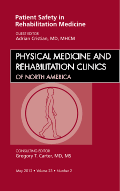
Physical Medicine and Rehabilitation Clinics of North America
Exploring the forefront of physical medicine and rehabilitation.Physical Medicine and Rehabilitation Clinics of North America is a leading journal published by W B Saunders Co-Elsevier Inc., focusing on the multifaceted disciplines of physical medicine, rehabilitation, and related health professions. With an impressive impact factor reflecting its significant contribution to the field, this journal ranks in the Q2 quartile for both Physical Therapy and Rehabilitation categories. The journal, available in both print (ISSN: 1047-9651) and online (E-ISSN: 1558-1381), provides critical insights, clinical updates, and comprehensive reviews that are essential for researchers, practitioners, and students alike. Covering a wide spectrum of topics from innovative rehabilitation techniques to emerging trends in sports medicine, it aims to disseminate knowledge that enhances patient care and drives advancements in rehabilitation practices. With a publication history spanning from 1995 to 2024, Physical Medicine and Rehabilitation Clinics is an essential resource for those dedicated to improving functional outcomes and the quality of life for patients worldwide.

Physiotherapy Practice and Research
Pioneering insights for the future of rehabilitation.Physiotherapy Practice and Research is a pivotal journal published by IOS PRESS that focuses on the dynamic field of rehabilitation and physiotherapy. Since its inception in 2009, this journal has provided a scholarly platform for researchers, clinicians, and students to disseminate innovative findings and practical applications in occupational therapy, sports medicine, and rehabilitation sciences. Although the journal currently holds Q3 and Q4 rankings in several categories, including occupational therapy and physical therapy, its impact in fostering research collaboration and informing practice is becoming increasingly important in advancing patient care and rehabilitation outcomes. With an ongoing commitment to open-access principles, the journal welcomes original research and review articles that address contemporary challenges and emerging practices within the field. As the journal continues to evolve, it aims to engage more deeply with the global research community, unlocking vital discussions that shape the future of physiotherapy.
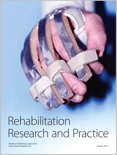
Rehabilitation Research and Practice
Pioneering Insights in Rehabilitation Science.Rehabilitation Research and Practice is a distinguished open-access journal published by HINDAWI LTD, dedicated to advancing knowledge in the fields of rehabilitation, physical therapy, and sports therapy. With its ISSN 2090-2867 and E-ISSN 2090-2875, the journal has been a pivotal resource for researchers and practitioners since its inception in 2010. Based in Egypt and reaching an international audience, the journal encapsulates cutting-edge research and evidence-based practices that significantly contribute to patient care and rehabilitation strategies. Notably, it holds a reputable position in the Scopus rankings—42nd out of 161 in Medicine Rehabilitation and 74th out of 247 in Health Professions. The journal enjoys a Q2 status in the 2023 category quartiles, reflecting its influence and quality within the academic community. The journal's commitment to an open-access format not only enhances its visibility and accessibility but also fosters collaboration among professionals, making it an indispensable resource for anyone engaged in rehabilitation research and practice.
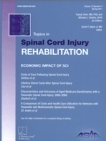
Topics in Spinal Cord Injury Rehabilitation
Transforming Rehabilitation for a Brighter TomorrowTopics in Spinal Cord Injury Rehabilitation is a premier journal dedicated to advancing research and clinical practices in the field of spinal cord injury rehabilitation. Published by the American Spinal Injury Association, this journal focuses on providing up-to-date insights and innovative strategies to enhance recovery and quality of life for individuals with spinal cord injuries. With an impressive trajectory from 1998 to 2024, it is recognized within the Q2 category for Neurology (clinical), Physical Therapy, Sports Therapy and Rehabilitation, and Rehabilitation as of 2023. Although the journal is not open access, it remains a critical resource for healthcare professionals and researchers, boasting a solid impact in the Scopus rankings that positions it among the top quartiles in its categories. Researchers, clinicians, and students alike will find invaluable knowledge within its pages, supporting the ongoing evolution of therapeutic approaches and rehabilitation methodologies. For subscriptions and more details, contact AMER SPINAL INJURY ASSOC at 9702 Gayton Rd, Suite 306, Richmond, VA 23238, United States.

European Journal of Physical and Rehabilitation Medicine
Transforming Rehabilitation: Evidence-Based Strategies for Better OutcomesWelcome to the European Journal of Physical and Rehabilitation Medicine, the premier peer-reviewed journal focusing on advancements in the fields of physical therapy, sports therapy, and rehabilitation. Published by EDIZIONI MINERVA MEDICA, this journal has established itself as a leading resource since its inception in 2008, now enjoying an impressive Q1 ranking in these disciplines according to 2023 metrics. With an emphasis on rigorous research and innovative clinical practice, the journal facilitates the dissemination of high-quality, evidence-based studies, contributing to the enhancement of patient care and therapeutic strategies. As an Open Access platform since 2022, the journal widens its reach, enabling researchers, clinicians, and students across the globe to access valuable insights without barriers. Residing in Italy, the journal's focus transcends regional confines, engaging a vibrant international community aimed at improving rehabilitation outcomes. Join us in exploring the latest developments that shape the future of rehabilitation sciences.
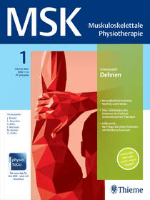
MSKMuskuloskelettale Physiotherapie
Exploring the future of physiotherapy for enhanced patient outcomes.MSK Muskuloskelettale Physiotherapie is a leading academic journal dedicated to the field of musculoskeletal physiotherapy, exploring innovative practices, research findings, and clinical advancements. Published by GEORG THIEME VERLAG KG, a reputable name in medical publishing, this journal aims to serve as a vital resource for professionals, researchers, and students alike who are passionate about enhancing patient care and therapeutic techniques within the musculoskeletal domain. With its commitment to open access, MSK Muskuloskelettale Physiotherapie ensures that cutting-edge research is readily available to a global audience, facilitating the exchange of ideas and fostering collaboration across disciplines. As the field evolves, this journal seeks to provide a comprehensive platform for the latest developments, emerging methodologies, and transformative insights that are essential for advancing knowledge and practice in musculoskeletal health.

Frontiers in Rehabilitation Sciences
Driving knowledge exchange in the evolving field of rehabilitation.Frontiers in Rehabilitation Sciences, published by FRONTIERS MEDIA SA, is an innovative open-access journal that has been committed to advancing the discipline of rehabilitation science since its inception in 2021. The journal aims to serve as a platform for researchers, clinicians, and students interested in disseminating high-quality research and insights that drive practice and policy in rehabilitation and physical therapy. With an E-ISSN of 2673-6861, it fosters interdisciplinary collaboration, tackling topics that range from therapeutic interventions to sports rehabilitation and beyond. As part of the Frontiers family, the journal employs cutting-edge open-access policies that ensure widespread dissemination and visibility of research findings. Although it is currently ranked within the lower quartiles based on Scopus rankings, the journal provides an invaluable opportunity for emerging scholars to publish their work in a rapidly evolving field. By sharing knowledge and fostering dialogue among scientists and practitioners alike, Frontiers in Rehabilitation Sciences plays a crucial role in shaping the future of rehabilitation methodologies and improving patient outcomes.
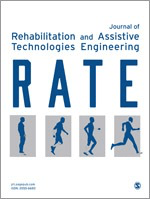
Journal of Rehabilitation and Assistive Technologies Engineering
Enhancing Quality of Life Through Interdisciplinary ResearchJournal of Rehabilitation and Assistive Technologies Engineering, published by SAGE PUBLICATIONS INC, is a leading interdisciplinary journal dedicated to advancing the field of rehabilitation and assistive technologies. With an emphasis on innovative research and practical applications, this journal seeks to bridge the gap between theoretical advancements and real-world implementations, making it essential reading for researchers, healthcare professionals, and students alike. The Journal of Rehabilitation and Assistive Technologies Engineering aims to disseminate high-quality findings that enhance the quality of life for individuals with disabilities through improved technologies and rehabilitation techniques. Although it is not an open access journal, it maintains a robust impact factor reflecting its significance in the field. By focusing on collaboration between various disciplines, the journal encourages fresh perspectives and solutions that can lead to breakthroughs in assistive technology. For those looking to stay informed about the latest research and developments, this journal is a vital resource.